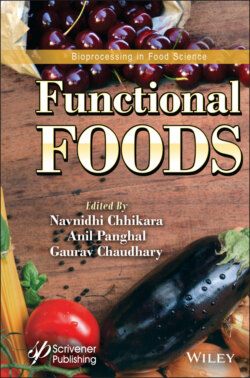Читать книгу Functional Foods - Группа авторов - Страница 44
3.2.6 Psyllium
ОглавлениеPsyllium is present in seeds of plants of the genus Plantago, a genus that contains about 200 species growing widely within the world’s moderate climatic regions [175, 176]. It is a crop that has historically been utilized by people for millennia. For example, it was reported to have been used by the Chinese in 250 BC for both the plant itself and for the psyllium of the seeds. Although Plantago plants are harvested around the world, only the species Plantago ovata Forsk and Plantago psyllium are being commercially produced as main seasonal crops in various American, European, and South Asian countries as a result of their seed mucilage, pharmaceutical, cosmetic, and food-grade qualities [177]. From past to present, psyllium has traditionally been harvested for use as a fiber supplement for dietary support, as well as a laxative agent [175, 178]. Currently, psyllium has been utilized in the landscape industry and in domestic and industrial wastewater treatment [176, 178–180]. Psyllium husk is used in the pharmaceutical industry as a medically bioactive polysaccharide; it is also utilized for treating various diseases, as will be described below in detail [180, 181]. Furthermore, it has valuable roles within the food industry, specifically in the creation of gels and for increasing consistency and stability [180, 182]. The species called Plantago ovata Forsk is widely grown in Iran and India [176, 180]. India leads the global market in both producing and exporting this product. Approximately 39,000 tons of psyllium seeds are produced each year in India, and 85% of psyllium seeds are supplied to the world market annually by India [176, 183, 184]. Blond psyllium, ispa-ghula, Indian plantago, and spagel are various common names for Plantago ovata Forsk [176, 180]. Psyllium plants grow to 15 cm in length. They are covered with fuzzy hairs, white in color, which grow at right angles to the leaves and stems. Seeds have small dimensions (1.5–2 cm) with brown or reddish brown coloring, and they possess large amounts of albuminous substances and mucilage. Seeds undergo drying and crushing, a process by which psyllium husk is obtained [177]. The latter constitutes the major product of psyllium seed. Remaining seed materials are often used in food products for animals [176, 183, 184].
The various possible applications of psyllium in pharmaceutical fields and in functional food production can be explained as being due to the unique chemical properties of psyllium husk. Psyllium husk has 6.83% moisture, 4.07% total ash, 2.62% soluble ash, 0.94% protein, and 84.98% total carbohydrate on a dry basis. As seen, the main components of psyllium husk are polysaccharides [178]. Psyllium husk can be considered as a neutral arabinoxylan containing 21.96% arabinose, 56.72% xylose on a molar basis, and some other sugar residues [178, 185, 186]. The monosaccharide composition of psyllium husk consists of rhamnose (1.5%), galactose (3.76%), glucose (0.64%), and mannose (0.40%) other than arabinose and xylose. Psyllium husk contains the lowest amount of phosphorus (140 μg/g) and magnesium (150 μg/g) while the major mineral substances of psyllium husk are potassium (8500 μg/g) and calcium (1500 μg/g) [178].
The psyllium polysaccharides mentioned above have been associated with the treatment of many diseases such as constipation [181, 187, 188], diarrhea [181, 189], inflammatory bowel diseases and ulcerative colitis [181, 190], childhood and adolescent obesity [181, 191], high levels of cholesterol [48, 181, 184, 192–196], colon cancer [181], and diabetes [181, 194, 197–200].
